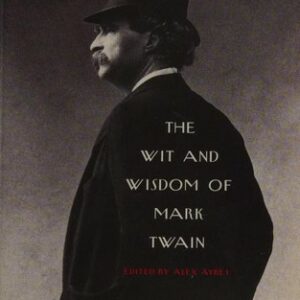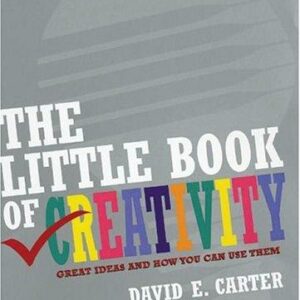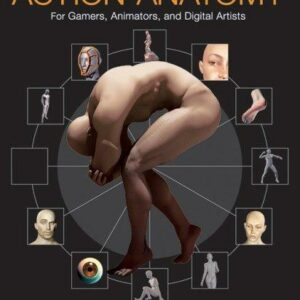Vanished Smile
$19.00
| Title | Range | Discount |
|---|---|---|
| Trade Discount | 5 + | 25% |
- Description
- Additional information
Description
On August 21, 1911, Leonardo da Vinci’s most celebrated painting vanished from the Louvre. The prime suspects were as shocking as the crime: Pablo Picasso and Guillaume Apollinaire, young provocateurs of a new art.
The sensational disappearing act captured the world’s imagination. Crowds stood in line to view the empty space on the museum wall. Thousands more waited, as concerned as if Mona Lisa were a missing person, for news of the lost painting. Almost a century later, questions still linger: Who really pinched Mona Lisa, and why? Part love story, part mystery, Vanished Smile reopens the puzzling case that transformed a Renaissance portrait into the most enduring icon of all time.“R.A. Scotti’s pen is as deft as Leonardo’s brush. . . . Sublime.” —The Washington Times
“Luminous…. Scotti narrates the investigation with gusto and grace.” —The Washington Post Book World
“A story that La Gioconda herself would have smiled at—enigmatically, of course.” —Time
“Beguiling…. An absence of clues meant an abundance of theories, and Scotti advances them all in an arresting…narrative.” —The New York Times Book Review
“Elegant and erudite…. Scotti follows the trail of the missing masterpiece with the same zestful sense of adventure that she brought to Basilica…. An unabashed literary diva, Scotti commands attention from page one.” —The Boston Globe
“The painting was missing for more than two years, and the names of the prime suspects in the case—Pablo Picasso and his friend, the poet and art critic Guillaume Apollinaire—push this story past something even Dan Brown could concoct. . . . A rolling . . . piece of entertainment. . . . Reminds us of the bedrock appeal of the Mona Lisa’s gaze.” —The New York Times
“Captivating. . . . Scotti’s sophistication, wit, style, and illuminating research makes this a delightfully suspenseful read.” —Providence Journal
“A charming [book] that delves deeper into the mystique of the Mona Lisa herself. . . . Readers hankering for more of da Vinci and his enigmatic sitter, whose smooth smile has been bewitching men for centuries . . . should reach for Vanished Smile.” —St. Petersburg Times
“Equal parts art history and crime caper. . . . This rollicking tale makes for fascinating reading.” —The Christian Science Monitor
“Reads like a prose poem with narrative gallop.” —Time
“Superb. . . . An art-heist page-turner that will delight art enthusiasts as well as true-crime buffs. (Note to Hollywood: This may be your best hope for a caper starring Brad Pitt and George Clooney as Picasso and Apollinaire.)” —Richmond Times-Dispatch
“As full of twists, turns and suspense as any mystery novel. . . . Makes the Mona Lisa’s story even more significant—and her smile even more alluring.” —BookPage
“Remarkable. . . . R.A. Scott combines her skills as a historian and novelist to recreate this sensational crime, which has all the twists and turns of a mystery novel, except that it’s true.” —Florida Weekly
“A book that nonfiction lovers, true-crime lovers, and especially art lovers will thoroughly enjoy.” —Curled Up With a Good Book
“Who needs The Da Vinci Code when you can have the real thing?” —The Daily Beast
“An apt tribute to Leonardo da Vinci’s mysterious muse. . . . In Vanished Smile, R.A. Scotti deftly uncovers the mysterious theft of the art world’s prima donna. . . . Thanks to Scotti’s meticulous research and atmospheric writing, a crime that had all the trappings of insanity, national prestige and obsession is brought to light marvelously.” —The Business Standard
“A crime caper . . . that convey[s] l’air du temps. . . . Enthralling.” —Financial Times R. A. Scotti is the author of Vanished Smile, a 2010 Edgar Award nominee, as well as three previous works of nonfiction, including Basilica: The Splendor and the Scandal—Building St. Peter’s and Sudden Sea: The Great Hurricane of 1938, and four novels. She lives in New York City.“R.A. Scotti’s pen is as deft as Leonardo’s brush. . . . Sublime.”
—The Washington Times
The introduction, questions, and suggestions for further reading that follow are designed to enhance your group’s discussion of R. A. Scotti’s fascinating investigation of the most audacious art theft in history.
1. What does Vanished Smile reveal about the art world in Europe in the early decades of the twentieth-century? In what ways was that world in the midst of momentous changes?
2. What are some of the most surprising facts about the Mona Lisa revealed in Vanished Smile? How does the painting’s remarkable history contribute to its current status?
3. How did Picasso, Apollinaire, and other avant-garde artists regard the Mona Lisa? Why were they so passionately opposed to museums like the Louvre? Does their critique of museums have merit today?
4. Scotti writes that “Apollinaire would call it ‘strange, incredible, tragic, and amusing all at once’ that he was the only person ever arrested in France for the theft of the Mona Lisa” [p.109]. Why was the poet/provocateur considered a prime suspect in the Mona Lisa‘s theft? How did public perceptions of his character, and his own radical views about art, help to implicate him? What effect did his arrest have on him?
5. Scotti shows that Peruggia’s stated motive for stealing the Mona Lisa—to restore her to her rightful place in Italy from which, he wrongly assumed, Napoleon had stolen her—was merely a cover for a money-making scheme. But the Louvre is filled with many great works that were plundered by Napoleon, and indeed many museums exhibit works of art that were either stolen or acquired in suspect transactions. Should museums be allowed to show and profit from works that were illegally or unethically acquired?
6. Why would thousands flock to the Louvre to view the empty space where the Mona Lisa had hung? How could the loss of a painting, even one as great as Mona Lisa, arouse such collective public grieving?
7. What are some of the more outlandish theories that have been advanced to explain the Mona Lisa’s strange power to enchant? What are some of the more poetic responses to her that Scotti includes in her narrative?
8. “If Mona Lisa is not the most beautiful, fashionable, or glamorous woman,” Scotti writes, “She is the most beguiling. . . . She touches without words, offering not a kiss or a caress but the anticipation. . . . If we try to look away, she follows us and will not let go” [p. 129-130]. What is it that makes the painting so “beguiling”?
9. Scotti writes that “To Renaissance artists, Mona Lisa represented an extraordinary technical achievement. To the Romantics she posed a tantalizing psychological puzzle” [p. 67]. What might account for this dramatic change in how the Mona Lisa was viewed? Which is the more remarkable aspect of the painting, its technical mastery or its psychological depth?
10. Does Karl Decker’s story of how and why the Mona Lisa was stolen seem plausible? If not, what would motivate him to concoct such a story?
11. Why was the story of Mona Lisa’s theft such an international sensation? Why did it capture headlines around the world for so long?
12. What surprising aspects of Picasso’s character and aesthetic vision emerge from Vanished Smile?
13. Scotti writes that Mona Lisa is “both disconcertingly real and transcendent” [p. 127]. What other dichotomies does the painting seem to embody or reflect?
14. Near the end of the book, Scotti asks, “If Peruggia was not the lone thief and the marqués and his expert forger were fictions, the mystery remains: Who masterminded the theft and, even more puzzling, why?” [p. 212]. What are some possible answers to this intriguing question?
(For a complete list of available reading group guides, and to sign up for the Reading Group Center enewsletter, visit www.readinggroupcenter.com)
2SUNDAY IN THE LOUVRE WITH LISA.Another scorching day in Paris, ninety- five degrees Fahrenheit, no hint of a breeze, no hope of a shower. The air was close, the sun so blazing that even the carriage horses were wearing straw hats. For more than fifty days, temperatures had rarely dropped below ninety degrees. The country beyond Paris was burning. Thatch- roofed farmhouses and acres of parched forest had become tinder, and spontaneous- combustion fires broke out near Poitiers, Orléans, and Beaumont, Albertville, Dijon, and Fontainebleau.Within the galleries of the Louvre Museum, even in the late afternoon of August 20, the heat was a physical presence so overwhelming that it trivialized four thousand years of art and history. Maximilien Alphonse Paupardin slumped on his stool in the doorway of the Salon Carré, as sated and overstuffed as a Rembrandt burgher. He was weighed down by the weather and by an unseasonable midday meal. In everything except name, Paupardin was a simple man who felt elevated in a uniform—first in an army uniform and now in the costume of a Louvre guard. A uniform gave him stature, confidence, a defined place in the world. Out of uniform, he felt diminished.He was ignorant of the history that surrounded him. He knew nothing of the medieval knights in suits of mail who had staved off Anglo- Norman invaders from the parapets of Fortress Louvre or the lusty young kings, François I and Louis XIV, a Valois and a Bourbon respectively, who, imagining Paris as a new Rome, had turned the Louvre fortress into a palace fit for a Caesar. Paupardin knew only one emperor, the cocky little Corsican and epic pillager, Napoleon Bonaparte.On an average day, several hundred visitors would traipse through the galleries—students, artists, foreign travelers, and Frenchmen from the provinces—but visitors were few on this Sunday afternoon at the end of summer. An occasional tourist had wandered through from the Grande Galerie, not staying long enough to arouse the guard’s interest or register in his memory. He stirred on his stool, his nap arrested.Had a ripple of gas disturbed him, his midday meal returning? Did he catch a sudden whiff of oleander or hear an alien sound? He raised an eyelid. Three “macaroni” were whispering together. The old guard glanced at them with disdain. They were dressed in their Sunday best, black suits and straw boaters, but no suit could disguise what they were—young working- class men who had immigrated to Paris from the mountain towns of northern Italy looking for work and, more often than not, finding trouble. There was one other visitor. The boy had returned with flowers. A young Goethe enamored of all things Italian. The guard recognized him, a quintessential German, hair flaxen, eyes ice blue, warmed now by the lust to possess the dark lady. He mooned over her, gazing into her liquid eyes, and she seemed to answer. Eyes are the mirror of the soul, her creator, Leonardo da Vinci, believed.Men had been coming to court her for years, bearing flowers, notes, and poems that Paupardin scooped up and tossed out at the end of the day. She accepted their attentions democratically but gave nothing in return, just the same half- smile. She conferred it on all equally. A promise, a tease, a warning. No man could be sure. The lovesick boy would return the next day and the day after.Like rival lovers paying suit, the three olive- skinned men watched the German. Bemused? Mocking? Wary? Their faces gleamed as if in rapture, features shining and dissolving in a heat so oppressive that, if The Victory of Samothrace were sculpted of wax, it would dissolve like the wings of Icarus. The flowers the boy proffered were already wilting. Paupardin saw the visitors without seeing them, as he saw the paintings without seeing them, the masterpieces of the Louvre collection, each in its place, unchanged for decades. He was anticipating the next day, Monday, his day of rest, when the museum was closed for cleaning and the staff reduced. The old guard pulled a soiled handkerchief from his pocket to mop his face, and caught her watching him. She was smiling as if she knew he had overindulged at noon and dozed on the job. It was the disconcerting smile of a mother or a mistress. He wiped his face to blot her out and sighed with resignation. There were no youngsters among the custodians who guarded the patrimony of France. Age and lethargy were job requirements. Only retired noncommissioned officers of the French army could apply to be guards at the Musée du Louvre. The country they had served allowed them one final tour of duty before relegating them to permanent pasture and probable penury. This was their last shuffle, and ambitions rarely if ever strayed beyond a good meal, an afternoon nap, or perhaps a few moments with a grandchild.The guard shifted his substantial weight on the insubstantial stool and repressed a belch, regretting his choice of cassoulet, a dinner suitable for a winter Sunday, not the doldrums of August. The afternoon meandered in half- time. By four o’clock, when the bell clanged signaling the museum’s closing, the “macaroni” and the young Goethe had disappeared.Paupardin picked up the oleander and folded his stool. The Grande and Petite Galeries emptied, footsteps echoing, the many doors banging shut. Outside the Louvre, Paris shimmered in the glaze of heat. In the Tuileries Gardens just beyond, a halfhearted game of boule was ending.Summer is not a popular season in Paris. Average August temperatures chase rich and poor to the vineyards of the Loire valley and the cooling beaches of Normandy. This August was the worst that Parisians forced by one circumstance or another to remain in town could remember in a dozen years. The heat wave had hung on for weeks. Less than one millimeter of rain had fallen in Paris during the entire month, and in a single day, four people had collapsed with sunstroke. At six o’clock, it was still ninety- one degrees. The cafés of Pigalle were deserted. The Seine stood still. Along its banks, the sheltering plane trees and chestnut trees drooped.Night like liquid velvet settled over the mansard roofs, innocent, if a night is ever innocent. A night is young but never innocent, and as Sunday merged with Monday and the city awakened to a new day, the game that would stun Paris and astound the world was afoot. No one would notice for more than twenty- four hours.US
Additional information
| Weight | 8.2 oz |
|---|---|
| Dimensions | 0.6000 × 5.2000 × 7.9000 in |
| Imprint | |
| Format | |
| ISBN-13 | |
| ISBN-10 | |
| Author | |
| Audience | |
| BISAC | |
| Subjects | the louvre, painting, pop culture, gifts for artists, Art books, fine art, betrayal, Con artists, crime books, true crime book, gifts for travelers, European history, artwork, true crime books, true crime gifts, art books for coffee table, criminal psychology, criminology books, ART015030, hoaxes, art teacher gifts, mugger, robber, Leonardo da Vinci, true crime, pablo picasso, picasso, culture, arts, thief, conspiracy, TRU004000, criminals, art, Paris, crime, theft, world history, France, artists, art history, museums, art book, louvre, da vinci, mona lisa |











